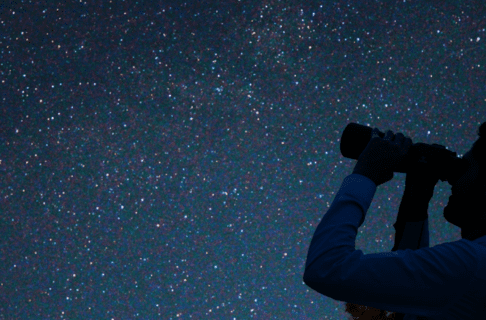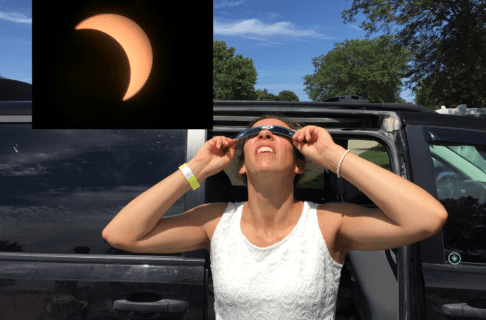Posted on: Thursday February 13, 2020
This month brings skywatchers a rare sight: a total eclipse of the red planet Mars by our Moon. The event is visible across much of North America, and is the only event of its kind all year.
As the Moon orbits our planet, it gets in the way of all sorts of other celestial objects that are farther away. When the moon blocks out the sun, we call it a solar eclipse, but a more general term is occultation. (“Occult” means “hidden”, so it makes sense. One object is hiding another.) The moon occults dozens of stars every month, but it’s fairly rare that things line up just right so that the Moon occults a planet. This month, we’ll see the thin crescent Moon occult Mars, early on the morning of Tuesday, February 18th. Here’s how to spot it yourself.

First thing: this is an early morning event! You want to be outside and ready to watch by about 5:50 am Manitoba time. Find an observing spot that has a clear horizon to the southeast. The thin crescent moon and Mars will be right beside each other, very low in the southeast. By this time, the sky is already starting to brighten with the first gleam of twilight, so you might have trouble seeing Mars clearly. Bring along a pair of binoculars or a telescope if you can.
As you watch, you will see two motions occur. First, everything will be slowly rising up higher into the southern sky. This is caused by the planet you’re standing on (earth, for most of us) rotating, and tilting the horizon “down” to uncover more of the sky. At the same time, Mars and the Moon will be getting closer together. This is almost all due to the Moon’s orbital motion around the earth; Mars is so far away in comparison that its motion really doesn’t matter much.
As the minutes tick by, the bright crescent of the moon will get closer and closer to Mars. Depending on the sky conditions and if you’re using any optical aid, you might lose track of Mars when it’s very close to the Moon. At some point, the moon’s edge will start to cover up Mars. Over the next 14 seconds, Mars will dim as it is slowly covered up, eventually disappearing completely behind the bright edge of the moon. Mars is in eclipse!
If you have a telescope, crank up the magnification as high as you can and you will be able to see Mars as a tiny disk, almost fully illuminated. At high power, you can watch the edge of the moon actually move across Mars over those 14 seconds. Eclipse should happen about 6:02 am Manitoba time, plus or minus a minute or so depending on where you are in the province.
Then it’s time to wait around for an hour or so, as the Moon continues its orbital motion and the earth continues its rotation. The moon will rise higher into the southern sky; the sky will brighten, and sunrise twilight will approach. But, about 7:19 am Manitoba time, Mars will begin to reappear from behind the dark edge of the moon, slowly fading in over the 14 seconds or so of the occultation.
If you have a telescope, you can probably take pictures of the event with your phone held up to the eyepiece. Post your images to the Manitoba Museum’s Facebook, Twitter, or Instagram accounts – we’d love to see them!





